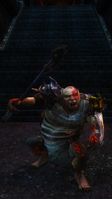Ghâsh-hai
Ghâsh-hai (Black Speech for Fire-folk) or Fire-orcs refers to a tribe or group of tribes of fire-infused creatures mostly of Orc-kind. Most of them are mid-sized Orcs, but there are also Ghâsh-hai Uruks, Ghâsh-hai Goblins, and even Ghâsh-hai Trolls.
They are distinguished by glowing, fiery patches in their flesh, which tends to be red or pale. Many adorn their armour with red-hot spikes, and often wield burning weapons.
The Ghâsh-hai of Mordor were once Mordor Orcs and Uruks in the service of Barad-dûr, tasked with driving slaves to construct Nargroth under the supervision of Urudanî Stonemaiden in the Third Age, after the Gondorians were driven out of Talath Úrui.[note 1] The project unearthed the Great Rogmul, Borangos the Horror, who turned these Orcs into Ghâsh-hai, "with arms and bones of flame." Urudanî was turned into a flame-wraith in thrall to Borangos, and the new Ghâsh-hai remained under her command, though Borangos in turn chose to ally himself with Sauron.[1][2] It is unknown if all Ghâsh-hai share this origin or if others were transformed by other fire-spirits, but they are typically found in the service of such spirits, such as Balrogs and other Regmyl.
The Ghâsh-hai of Moria are believed to have come from Mordor, but some of them were swayed to the service of Durin's Bane.[3] One of their mightiest leaders, Gothghaash the Firecaller, paid tribute to Mazog.[4] Fire-orcs are also known to be in Angmar: in Gador Gularan, the dungeons under Barad Gularan[5]; and a tribe called the Ghâshfra, who came to the Rift of Nûrz Ghâshu to attempt to free Thaurlach.[6] Other Ghâsh-hai in service to Angmar include Graug, Krampum (who came from Moria), and Tharb the goblin. These three were involved in a skirmish involving Graug's attempt to inform his superiors of the location of Esteldín. Still other Ghâsh-hai are aligned with the White Hand, serving in Saruman's Foundry and the Pits of Isengard.[7][8]
Gallery
-
A Ghâsh-hai Warrior of Moria.
-
A Ghâsh-hai Archer of Moria.
-
Tharb, a Ghâsh-hai goblin in service to Angmar.
-
A Ghâshfra Defender, one of the Fire-orcs invading the Rift of Nûrz Ghâshu.
-
A Ghâsh-hai Gate-warden, protector of the prison of Naerband.
Types
Notes
- ↑ Likely shortly after the Great Plague in T.A. 1636
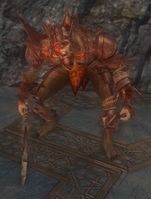
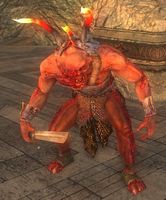
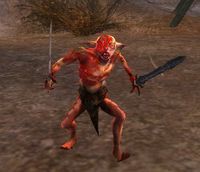
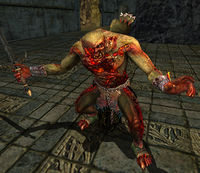
![Snagtalún, one of a "new breed of troll" brought to the Rift by the Ghâshfra.[9]](/images/thumb/0/0d/Snagtal%C3%BAn.jpg/200px-Snagtal%C3%BAn.jpg)
![Gurbák, a Ghâsh-hai Troll and Bellows Master of the Foundry.[10]](/images/thumb/d/d6/Gurb%C3%A1k.jpg/200px-Gurb%C3%A1k.jpg)
